Featured Articles
Shane Mosley and Winky Wright Hang Up The Gloves

 Two stellar pugilists exited the stage this weekend, though, we must caution, this being boxing, retirement announcements are always best taken with a lump of caution. Shane Mosley on Sunday night made it known that he was hanging up the gloves, after nearly 20 years as a professional, and Winky Wright earlier in the day told the world that he was through.
Two stellar pugilists exited the stage this weekend, though, we must caution, this being boxing, retirement announcements are always best taken with a lump of caution. Shane Mosley on Sunday night made it known that he was hanging up the gloves, after nearly 20 years as a professional, and Winky Wright earlier in the day told the world that he was through.
The Mosley news broke on the Ring website, as Lem Satterfield reported he got the word from Mosley's camp coordinator that his loss to Canelo Alvarez on May 5 would be his final scuffle. His record stands at 46-8-1. He didn't address the news on his official Twitter account right away, so I initially wanted to add a note of caution: boxers contemplate comebacks until they head for that final dirt nap. But on Monday morning, he Tweeted this: “Good Mourning everybody Just want to thank you for showing me so much love. Had a great career and loved every moment of it. win, lose or draw.”
Mosley didn't look horrid against Canelo, and in fact could beat a fair number of folks at that weight class, even at age 40. But as of today, you can start the countdown to his entrance into the Hall of Fame, in 2017. The ex lightweight ace, who also held crowns at 147 and 154 pounds, will be remembered for truly emerging on all radar screens when he went from 135 to 147 and beat Oscar De La Hoya, via split decision, in June 2000. His star dimmed a bit from back to back losses to Vernon Forrest in 2002, but he regained his shine with another win over Oscar, in 2003.
It emerged in 2008 that Mosley used an illegal PED prior to this bout, an admission the California boxer made in grand jury testimony. His rep took a hit, as he told one and all–including me, looking me in the eyes as he said it during a one on one for a then cancelled Mosley-Zab Judah fight– in defending himself that the accusation of PED use was bogus, that he must've been dosed unknowingly, before admitting under oath that he knew what he was doing when receiving chemical aid from Victor Conte at BALCO.
Back to back losses to Winky Wright in 2004 had many pundits proclaiming that clearly Mosley's best days were far behind him. But he proved doubters wrong, to an extent, with back to back wins against Fernando Vargas, in 2006. Vargas, though, was near the end of his line at the time. Many thought Mosley got the better of Miguel Cotto when they met in NYC in 2007, but the judges said otherwise, giving the Puerto Rican a UD nod. Now 37, Mosley's late-career apex came when he whacked Antonio Margarito around, and scored a TKO9 win in 2009, right after inspectors found hardened hand pads in the Mexican's mitts prior to their bout.
Critics of Mosley will say that Margarito wasn't the monster many thought, and was in fact an ordinary boxer if not able to use a PED in his gloves. Mosley didn't have much luck against Floyd Mayweather in his next bout, though he did buzz Money on the way to a wide decision loss. Mosley next engaged in a dreadful waltz with Sergio Mora, and followed that with a pick-up-the-paycheck effort against Pacquiao in May 2011. But he regained fans with a spirited effort against the phenom Canelo on the Mayweather-Cotto undercard. “Canelo can go a long ways,” Mosley said after the loss to a man 19 years younger than he. “When the kids start to beat you, you might need to start going to promoting.”
Indeed. Mosley says he has ample money in the bank, despite the theory that a divorce picked his pockets. He was always willing to take on an immense challenge and he must be lauded for never being a ducker. It could be argued that he maybe didn't live up to the sum of his parts, losing a bunch of efforts to fighters many experts thought he was more skilled than, but his willingness to test his personal boundaries will never be questioned. Best of luck to Shane Mosley in his retirement, and staving off that inevitable urge to test himself in the ring just one more time.
While Mosley's Hall call seems imminent, Winky Wright's will be up for more debate. He came back to the ring on June 2 after being away for three years, and looked OK against young gun Peter Quillin. But at 40, the reflexes weren't as cooperative as they once were for a man whose real name is “Ronald” but was tagged Winky by his grandma as a toddler. Once of the best defenders of his era, Wright was knocked down in round five and hurt a few other times. Sunday morning, after sleeping on it, he Tweeted: “It was fun while it lasted I did what I set out to do and that was to be great. Part of being a good boxer is knowing when to call it quits.
If I can't be the champion again theres no need to keep boxing. But I thank all of u from the bottom of my heart for always supporting me & I'll still be ringside at all the fights!”
He will be known, as will Mosley, as one who sought stiff challenges. (Though he also had a rep as a “too tough” negotiator, with some thinking he often asked for more many than his popularity called for.) Wright, who debuted in 1990, built up a nice record in Europe, as he fought for the Acaries brothers. He was known to hardcore fights fans as he wracked up title defenses of the IBF 154 pound crown he won against Robert Frazier in 2001. In his fifth defense, when he downed Shane Mosley, his time had really arrived. “A lot of people always told them that I was good but they didn’t believe it because I never fought one of the big dudes. Now that I beat one of the big-name, pound-for-pound so-called fighters, you gotta give it up to me. I did what I said I can do,” he said then. Another win against Mosley and his thorough domination of Felix Trinidad in 2005 gave him pound for pound cred in a big way. No, he wasn't a bomber or a trader, and therefore his skills were best appreciated by true fans of the sweet science. His jab and impenetrable D, featuring the longest elbows known to man, were frustrating even for the most skilled sharpshooters. Wright didn't agree with the judges who saw his 2006 clash with Jermain Taylor a draw, and he stubbornly clung to a dollar figure he thought he deserved, which squashed a rematch. Instead, he bettered Ike Quartey in December 2006, in Quartey's last bout.
Wright went out of his comfort zone, and paid for it, when he agreed to go to 170 to snag a payday with Bernard Hopkins. He suffered his first loss in eight years in that one, then took almost two years off. He flirted with fights, and sometimes marinated in self-pity and frustration. “Why should I go fight these lesser guys when I know I'm above them?” Wright said in 2008. “You got De La Hoya. He's a steady loser; he lost two of his last three. Taylor lost his last fight. All of these fighters lose. But they have opponents who want to fight them again. I have nobody that wants to fight me because they know they're in for a tough fight. They're ducking me, they don't want to fight. That's why I'm left out. They want me to fight Kessler. Why do I need to fight these dudes? I'm at the top.” He capitulated, and took a tuneup date with Michi Munoz for December 2008, but hurt his hands and cancelled it. A face-off with Arthur Abraham was discussed but instead Wright decided to lock horns with Paul Williams. It didn't go well; Long Tall Paul outboxed Wright clearly. He licked his wounds, set up a fight with Grady Brewer, and the plug got pulled on that card at the end of 2009. Kelly Pavlik went in another direction, a crack at Sergio Martinez in April 2010, so Winky went back to the links, and waiting. A K9 Bundrage gig didn't happen, neither did a scrap with Matthew Macklin in April 2011, because of a Wright injury. He filled the time helping out Chad Dawson, while eyeing Canelo or Miguel Cotto. He got a chance against a young gun, in Peter Quillin, and in that scrap Saturday, determined that at 40, he just can't do what he used to be able to. So he bid adieu to the game.
Will he resist the inevitable lure? Hard to predict…If you had to wager if either he or Mosley would un-retire, you have to think there is a decent chance that happens. It's human nature, it's especially human nature in boxing, with no teammates around to drill the truth into you in training camp. We at TSS thank both men for their service in entertaining us, and hope that their choice does them justice, in every which way, for them, their family and their long-term health and well-being.
Featured Articles
Avila Perspective, Chap. 323: Benn vs Eubank Family Feud and More
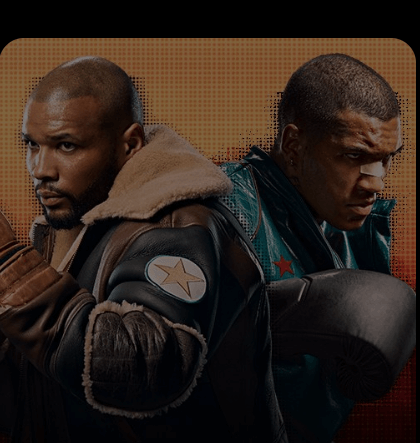
Next generation rivals Conor Benn and Chris Eubank Jr. carry on the family legacy of feudal warring in the prize ring on Saturday.
This is huge in British boxing.
Eubank (34-3, 25 KOs) holds the fringe IBO middleweight title but won’t be defending it against the smaller welterweight Benn (23-0, 14 KOs) on Saturday, April 26, at Tottenham Hotspur Stadium in London. DAZN will stream the Matchroom Boxing card.
This is about family pride.
The parents of Eubank and Benn actually began the feud in the 1990s.
Papa Nigel Benn fought Papa Chris Eubank twice. Losing as a middleweight in November 1990 at Birmingham, England, then fighting to a draw as a super middleweight in October 1993 in Manchester. Both were world title fights.
Eubank was undefeated and won the WBO middleweight world title in 1990 against Nigel Benn by knockout. He defended it three times before moving up and winning the vacant WBO super middleweight title in September 1991. He defended the super middleweight title 14 times until suffering his first pro defeat in March 1995 against Steve Collins.
Benn won the WBO middleweight title in April 1990 against Doug DeWitt and defended it once before losing to Eubank in November 1990. He moved up in weight and took the WBC super middleweight title from Mauro Galvano in Italy by technical knockout in October 1992. He defended the title nine times until losing in March 1996. His last fight was in November 1996, a loss to Steve Collins.
Animosity between the two families continues this weekend in the boxing ring.
Conor Benn, the son of Nigel, has fought mostly as a welterweight but lately has participated in the super welterweight division. He is several inches shorter in height than Eubank but has power and speed. Kind of a British version of Gervonta “Tank” Davis.
“It’s always personal, every opponent I fight is personal. People want to say it’s strictly business, but it’s never business. If someone is trying to put their hands on me, trying to render me unconscious, it’s never business,” said Benn.
This fight was scheduled twice before and cut short twice due to failed PED tests by Benn. The weight limit agreed upon is 160 pounds.
Eubank, a natural middleweight, has exchanged taunts with Benn for years. He recently avenged a loss to Liam Smith with a knockout victory in September 2023.
“This fight isn’t about size or weight. It’s about skill. It’s about dedication. It’s about expertise and all those areas in which I excel in,” said Eubank. “I have many, many more years of experience over Conor Benn, and that will be the deciding factor of the night.”
Because this fight was postponed twice, the animosity between the two feuding fighters has increased the attention of their fans. Both fighters are anxious to flatten each other.
“He’s another opponent in my way trying to crush my dreams. trying to take food off my plate and trying to render me unconscious. That’s how I look at him,” said Benn.
Eubank smiles.
“Whether it’s boxing, whether it’s a gun fight. Defense, offense, foot movement, speed, power. I am the superior boxer in each of those departments and so many more – which is why I’m so confident,” he said.
Supporting Bout
Former world champion Liam Smith (33-4-1, 20 KOs) tangles with Ireland’s Aaron McKenna (19-0, 10 KOs) in a middleweight fight set for 12 rounds on the Benn-Eubank undercard in London.
“Beefy” Smith has long been known as one of the fighting Smith brothers and recently lost to Eubank a year and a half ago. It was only the second time in 38 bouts he had been stopped. Saul “Canelo” Alvarez did it several years ago.
McKenna is a familiar name in Southern California. The Irish fighter fought numerous times on Golden Boy Promotion cards between 2017 and 2019 before returning to the United Kingdom and his assault on continuing the middleweight division. This is a big step for the tall Irish fighter.
It’s youth versus experience.
“I’ve been calling for big fights like this for the last two or three years, and it’s a fight I’m really excited for. I plan to make the most of it and make a statement win on Saturday night,” said McKenna, one of two fighting brothers.
Monster in L.A.
Japan’s super star Naoya “Monster” Inoue arrived in Los Angeles for last day workouts before his Las Vegas showdown against Ramon Cardenas on Sunday May 4, at T-Mobile Arena. ESPN will televise and stream the Top Rank card.
It’s been four years since the super bantamweight world champion performed in the US and during that time Naoya (29-0, 26 KOs) gathered world titles in different weight divisions. The Japanese slugger has also gained fame as perhaps the best fighter on the planet. Cardenas is 26-1 with 14 KOs.
Pomona Fights
Super featherweights Mathias Radcliffe (9-0-1) and Ezequiel Flores (6-4) lead a boxing card called “DMG Night of Champions” on Saturday April 26, at the historic Fox Theater in downtown Pomona, Calif.
Michaela Bracamontes (11-2-1) and Jesus Torres Beltran (8-4-1) will be fighting for a regional WBC super featherweight title. More than eight bouts are scheduled.
Doors open at 6 p.m. For ticket information go to: www.tix.com/dmgnightofchampions
Fights to Watch
Sat. DAZN 9 a.m. Conor Benn (23-0) vs Chris Eubank Jr. (34-3); Liam Smith (33-4-1) vs Aaron McKenna (19-0).
To comment on this story in the Fight Forum CLICK HERE
Featured Articles
Floyd Mayweather has Another Phenom and his name is Curmel Moton

Floyd Mayweather has Another Phenom and his name is Curmel Moton
In any endeavor, the defining feature of a phenom is his youth. Philadelphia Phillies outfielder Bryce Harper was a phenom. He was on the radar screen of baseball’s most powerful player agents when he was 14 years old.
Curmel Moton, who turns 19 in June, is a phenom. Of all the young boxing stars out there, wrote James Slater in July of last year, “Curmel Moton is the one to get most excited about.”
Moton was born in Salt Lake City, Utah. His father Curtis Moton, a barber by trade, was a big boxing fan and specifically a big fan of Floyd Mayweather Jr. When Curmel was six, Curtis packed up his wife (Curmel’s stepmom) and his son and moved to Las Vegas. Curtis wanted his son to get involved in boxing and there was no better place to develop one’s latent talents than in Las Vegas where many of the sport’s top practitioners came to train.
Many father-son relationships have been ruined, or at least frayed, by a father’s unrealistic expectations for his son, but when it came to boxing, the boy was a natural and he felt right at home in the gym.
The gym the Motons patronized was the Mayweather Boxing Club. Curtis took his son there in hopes of catching the eye of the proprietor. “Floyd would occasionally drop by the gym and I was there so often that he came to recognize me,” says Curmel. What he fails to add is that the trainers there had Floyd’s ear. “This kid is special,” they told him.
It costs a great deal of money for a kid to travel around the country competing in a slew of amateur boxing tournaments. Only a few have the luxury of a sponsor. For the vast majority, fund raisers such as car washes keep the wheels greased.
Floyd Mayweather stepped in with the financial backing needed for the Motons to canvas the country in tournaments. As an amateur, Curmel was — take your pick — 156-7 or 144-6 or 61-3 (the latter figure from boxrec). Regardless, at virtually every tournament at which he appeared, Curmel Moton was the cock of the walk.
Before the pandemic, Floyd Mayweather Jr had a stable of boxers he promoted under the banner of “The Money Team.” In talking about his boxers, Floyd was understated with one glaring exception – Gervonta “Tank” Davis, now one of boxing’s top earners.
When Floyd took to praising Curmel Moton with the same effusive language, folks stood up and took notice.
Curmel made his pro debut on Sept. 30, 2023, at the T-Mobile Arena in Las Vegas on the undercard of the super middleweight title fight between Canelo Alvarez and Jermell Charlo. After stopping his opponent in the opening round, he addressed a flock of reporters in the media room with Floyd standing at his side. “I felt ready,” he said, “I knew I had Floyd behind me. He believes in me. I had the utmost confidence going into the fight. And I went in there and did what I do.”
Floyd ventured the opinion that Curmel was already a better fighter than Leigh Wood, the reigning WBA world featherweight champion who would successfully defend his belt the following week.
Moton’s boxing style has been described as a blend of Floyd Mayweather and Tank Davis. “I grew up watching Floyd, so it’s natural I have some similarities to him,” says Curmel who sparred with Tank in late November of 2021 as Davis was preparing for his match with Isaac “Pitbull” Cruz. Curmell says he did okay. He was then 15 years old and still in school; he dropped out as soon as he reached the age of 16.
Curmel is now 7-0 with six KOs, four coming in the opening round. He pitched an 8-round shutout the only time he was taken the distance. It’s not yet official, but he returns to the ring on May 31 at Mandalay Bay in Las Vegas where Caleb Plant and Jermall Charlo are co-featured in matches conceived as tune-ups for a fall showdown. The fight card will reportedly be free for Amazon Prime Video subscribers.
Curmel’s presumptive opponent is Renny Viamonte, a 28-year-old Las Vegas-based Cuban with a 4-1-1 (2) record. It will be Curmel’s first professional fight with Kofi Jantuah the chief voice in his corner. A two-time world title challenger who began his career in his native Ghana, the 50-year-old Jantuah has worked almost exclusively with amateurs, a recent exception being Mikaela Mayer.
It would seem that the phenom needs a tougher opponent than Viamonte at this stage of his career. However, the match is intriguing in one regard. Viamonte is lanky. Listed at 5-foot-11, he will have a seven-inch height advantage.
Keeping his weight down has already been problematic for Moton. He tipped the scales at 128 ½ for his most recent fight. His May 31 bout, he says, will be contested at 135 and down the road it’s reasonable to think he will blossom into a welterweight. And with each bump up in weight, his short stature will theoretically be more of a handicap.
For fun, we asked Moton to name the top fighter on his pound-for-pound list. “[Oleksandr] Usyk is number one right now,” he said without hesitation,” great footwork, but guys like Canelo, Crawford, Inoue, and Bivol are right there.”
It’s notable that there isn’t a young gun on that list. Usyk is 38, a year older than Crawford; Inoue is the pup at age 32.
Moton anticipates that his name will appear on pound-for-pound lists within the next two or three years. True, history is replete with examples of phenoms who flamed out early, but we wouldn’t bet against it.
To comment on this story in the Fight Forum CLICK HERE
Featured Articles
Arne’s Almanac: The First Boxing Writers Assoc. of America Dinner Was Quite the Shindig
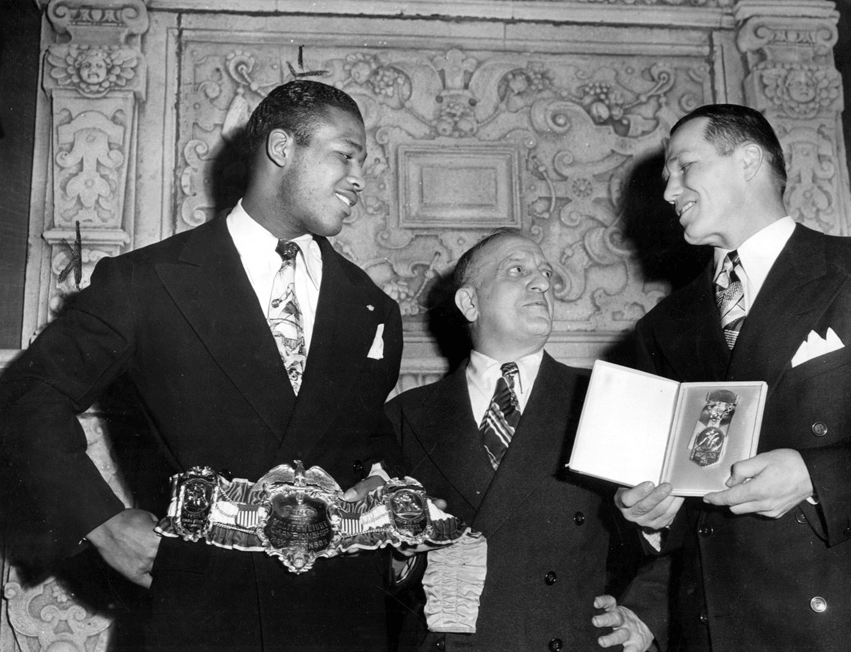
The first annual dinner of the Boxing Writers Association of America was staged on April 25, 1926 in the grand ballroom of New York’s Hotel Astor, an edifice that rivaled the original Waldorf Astoria as the swankiest hotel in the city. Back then, the organization was known as the Boxing Writers Association of Greater New York.
The ballroom was configured to hold 1200 for the banquet which was reportedly oversubscribed. Among those listed as agreeing to attend were the governors of six states (New York, New Jersey, Massachusetts, Pennsylvania, Connecticut, and Maryland) and the mayors of 10 of America’s largest cities.
In 1926, radio was in its infancy and the digital age was decades away (and inconceivable). So, every journalist who regularly covered boxing was a newspaper and/or magazine writer, editor, or cartoonist. And at this juncture in American history, there were plenty of outlets for someone who wanted to pursue a career as a sportswriter and had the requisite skills to get hired.
The following papers were represented at the inaugural boxing writers’ dinner:
New York Times
New York News
New York World
New York Sun
New York Journal
New York Post
New York Mirror
New York Telegram
New York Graphic
New York Herald Tribune
Brooklyn Eagle
Brooklyn Times
Brooklyn Standard Union
Brooklyn Citizen
Bronx Home News
This isn’t a complete list because a few of these papers, notably the New York World and the New York Journal, had strong afternoon editions that functioned as independent papers. Plus, scribes from both big national wire services (Associated Press and UPI) attended the banquet and there were undoubtedly a smattering of scribes from papers in New Jersey and Connecticut.
Back then, the event’s organizer Nat Fleischer, sports editor of the New York Telegram and the driving force behind The Ring magazine, had little choice but to limit the journalistic component of the gathering to writers in the New York metropolitan area. There wasn’t a ballroom big enough to accommodate a good-sized response if he had extended the welcome to every boxing writer in North America.
The keynote speaker at the inaugural dinner was New York’s charismatic Jazz Age mayor James J. “Jimmy” Walker, architect of the transformative Walker Law of 1920 which ushered in a new era of boxing in the Empire State with a template that would guide reformers in many other jurisdictions.
Prizefighting was then associated with hooligans. In his speech, Mayor Walker promised to rid the sport of their ilk. “Boxing, as you know, is closest to my heart,” said hizzoner. “So I tell you the police force is behind you against those who would besmirch or injure boxing. Rowdyism doesn’t belong in this town or in your game.” (In 1945, Walker would be the recipient of the Edward J. Neil Memorial Award given for meritorious service to the sport. The oldest of the BWAA awards, the previous recipients were all active or former boxers. The award, no longer issued under that title, was named for an Associated Press sportswriter and war correspondent who died from shrapnel wounds covering the Spanish Civil War.)
Another speaker was well-traveled sportswriter Wilbur Wood, then affiliated with the Brooklyn Citizen. He told the assembly that the aim of the organization was two-fold: to help defend the game against its detractors and to promote harmony among the various factions.
Of course, the 1926 dinner wouldn’t have been as well-attended without the entertainment. According to press dispatches, Broadway stars and performers from some of the city’s top nightclubs would be there to regale the attendees. Among the names bandied about were vaudeville superstars Sophie Tucker and Jimmy Durante, the latter of whom would appear with his trio, Durante, (Lou) Clayton, and (Eddie) Jackson.
There was a contraction of New York newspapers during the Great Depression. Although empirical evidence is lacking, the inaugural boxing writers dinner was likely the largest of its kind. Fifteen years later, in 1941, the event drew “more than 200” according to a news report. There was no mention of entertainment.
In 1950, for the first time, the annual dinner was opened to the public. For $25, a civilian could get a meal and mingle with some of his favorite fighters. Sugar Ray Robinson was the Edward J. Neil Award winner that year, honored for his ring exploits and for donating his purse from the Charlie Fusari fight to the Damon Runyon Cancer Fund.
There was no formal announcement when the Boxing Writers Association of Greater New York was re-christened the Boxing Writers Association of America, but by the late 1940s reporters were referencing the annual event as simply the boxing writers dinner. By then, it had become traditional to hold the annual affair in January, a practice discontinued after 1971.
The winnowing of New York’s newspaper herd plus competing banquets in other parts of the country forced Nat Fleischer’s baby to adapt. And more adaptations will be necessary in the immediate future as the future of the BWAA, as it currently exists, is threatened by new technologies. If the forthcoming BWAA dinner (April 30 at the Edison Ballroom in mid-Manhattan) were restricted to wordsmiths from the traditional print media, the gathering would be too small to cover the nut and the congregants would be drawn disproportionately from the geriatric class.
Some of those adaptations have already started. Last year, Las Vegas resident Sean Zittel, a recent UNLV graduate, had the distinction of becoming the first videographer welcomed into the BWAA. With more and more people getting their news from sound bites, rather than the written word, the videographer serves an important function.
The reporters who conducted interviews with pen and paper have gone the way of the dodo bird and that isn’t necessarily a bad thing. A taped interview for a “talkie” has more integrity than a story culled from a paper and pen interview because it is unfiltered. Many years ago, some reporters, after interviewing the great Joe Louis, put words in his mouth that made him seem like a dullard, words consistent with the Sambo stereotype. In other instances, the language of some athletes was reconstructed to the point where the reader would think the athlete had a second job as an English professor.
The content created by videographers is free from that bias. More of them will inevitably join the BWAA and similar organizations in the future.
Photo: Nat Fleischer is flanked by Sugar Ray Robinson and Tony Zale at the 1947 boxing writers dinner.
-

 Featured Articles4 weeks ago
Featured Articles4 weeks agoBoxing Odds and Ends: The Wacky and Sad World of Livingstone Bramble and More
-
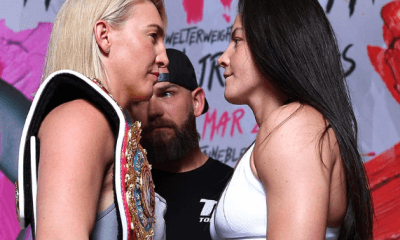
 Featured Articles4 weeks ago
Featured Articles4 weeks agoAvila Perspective, Chap. 319: Rematches in Las Vegas, Cancun and More
-

 Featured Articles4 weeks ago
Featured Articles4 weeks agoRingside at the Fontainebleau where Mikaela Mayer Won her Rematch with Sandy Ryan
-
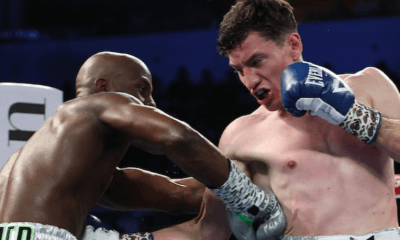
 Featured Articles4 weeks ago
Featured Articles4 weeks agoWilliam Zepeda Edges Past Tevin Farmer in Cancun; Improves to 34-0
-
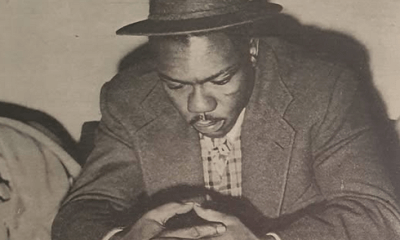
 Featured Articles3 weeks ago
Featured Articles3 weeks agoHistory has Shortchanged Freddie Dawson, One of the Best Boxers of his Era
-

 Featured Articles3 weeks ago
Featured Articles3 weeks agoAvila Perspective, Chap. 320: Women’s Boxing Hall of Fame, Heavyweights and More
-
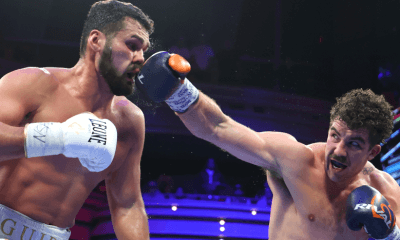
 Featured Articles3 weeks ago
Featured Articles3 weeks agoResults and Recaps from Las Vegas where Richard Torrez Jr Mauled Guido Vianello
-
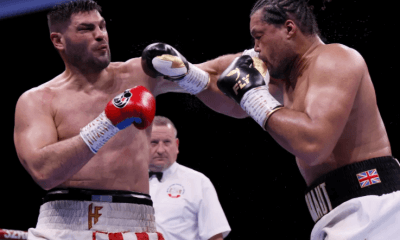
 Featured Articles3 weeks ago
Featured Articles3 weeks agoFilip Hrgovic Defeats Joe Joyce in Manchester















